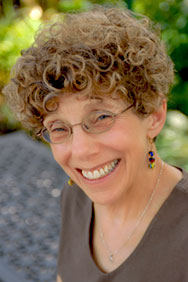Cells: An Evolutionary Tale
 April 23, 2009
April 23, 2009 Since the 1960’s, we have discovered a lot about the evolution of cells.
Fossil evidence indicated that bacteria had not only been the first living creatures, but they had had the earth to themselves for two billion years. Bacteria are single-celled organisms. Each one carries its genes, made of DNA, in a ring-shaped chromosome folded up in a special region of the cell. Smaller rings of genes, called plasmids, sometimes accompany this chromosome.
Over two billion years, plenty of mutations took place in bacterial genes, resulting in vast numbers of different bacterial species. Also, being single-celled, bacteria were, and are, capable of picking up chromosome fragments from one another, introducing even more new species.
About a billion and a half years ago, a new type of organism appeared in the fossil record. Like bacteria, they consisted of single cells. But unlike bacteria, these cells carried their chromosomes enclosed within a special membrane. These membrane-enclosed chromosomes formed a “nucleus” in the new cell type. To distinguish bacteria from the new cells, biologists call bacteria “prokaryotic,” meaning “before the nucleus;” and they called nucleated cells “eukaryotic,” meaning “true nucleus.” Besides the nucleus, the new eukaryotic cells contained a number of infinitesimal organs, called “organelles.” Some of these organelles were photosynthetic and made sugar from light energy. Some did the opposite, extracting energy from sugar to run cell processes.
Over the next billion and a half years, mutations and gene trading resulted in vast numbers of new eukaryotic species. In some cases, eukaryotic cells joined into multicellular species, such as plants, animals and fungi.
As François Jacob famously wrote, evolution acts like a tinkerer. Old devices and mechanisms get put to new uses. So it was unlikely that eukaryotic cells had sprung up on their own. It was much more likely that they had somehow evolved out of prokaryotic cells.
In 1967, Lynn Margulis at Boston University suggested that the first eukaryotic cell could actually have been a group of prokaryotic cells that began living together. In fact, she found that the photosynthetic organelles, called “chloroplasts,” are quite similar to certain photosynthetic bacteria. She also found that the energy-harvesting organelles, called “mitochondria,” are quite similar to certain oxygen-using bacteria. And it turned out that chloroplasts and mitochondria have their own genes, exactly as we might expect, if they were actually bacteria that just happened to be living inside another cell. Margulis’ idea is called the “endosymbiont hypothesis” or the “endosymbiont theory.” It is the beginning of some interesting stories about cell evolution. Stay tuned!
 DNA,
DNA,  François Jacob,
François Jacob,  Lynn Margulis,
Lynn Margulis,  bacteria,
bacteria,  biology,
biology,  chromosome,
chromosome,  endosymbiont,
endosymbiont,  eukaryotic,
eukaryotic,  fossil,
fossil,  gene,
gene,  genetics,
genetics,  nucleus,
nucleus,  organelle,
organelle,  plasmid,
plasmid,  science writer,
science writer,  wonder
wonder 
